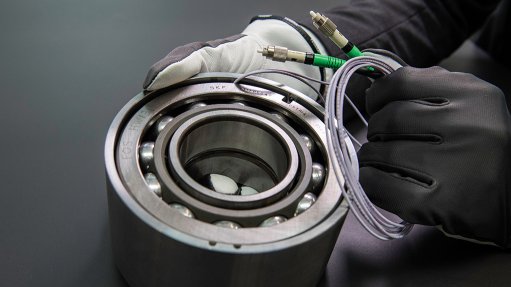

Fibre-optic tech monitors bearing parameters


FULLY LOADED The fibre-optic load-sensing bearings developed by SKF gather data such as load and stress on pumps and compressors at a distance
Bearing manufacturer and distributor SKF says its fibre-optic sensing technology used in its bearings to capture their working parameters, is “a world first”.
The technology provides instant access to a variety of bearings data, including axial versus radial loads, polar lots of the bearing´s internal strain field, strain spectra, load directions, speed of rotations and temperature.
The company’s fibre-optic load-sensing bearings for pumps and compressors allow for accurate product development, consequently accelerating the design and verification process.
Original-equipment manufacturers and end-users can use the data when testing and installing new equipment to check that the correct load and lubrication requirements have been defined and are not exceeded during installation.
Notably, fibre optics can be used on any size bearing.
A substantial advantage of using fibre optics is that there are no electronics inside the bearing, mitigating the need for maintenance on the bearings.
The fibre-optic load-sensing bearings, which are interchangeable with conventional bearings offer several benefits to designers and test engineers, including optimised design, lower development costs, shorter design cycles, and a digitalised design and verification process.
SKF senior applications expert Lars Kahlman mentions that understanding bearing loads is essential in the design of rotating equipment such as pumps.
“SKF has – through extensive testing campaigns and simulations – developed algorithms that makes the technology really accurate and robust,” he says.
The bearings are safe to use in hazardous environments, as signal data is transferred at high-speed by low power using less electricity in optical fibres rather than as electrical signals, making the system also immune to electromagnetic fields.
“Fibre-optic load-sensing bearings also allow for robust remote monitoring where wireless technology cannot be used, as the optical fibres can transmit signals over very long distances,” he concludes.


